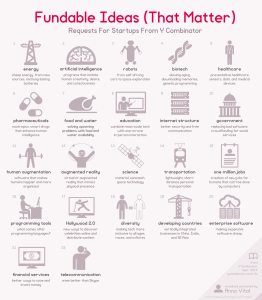Recently, Lauren Jarmusz – a Doctor of Physical Therapy Student at Northeastern University graduating in May 2016 – and I interviewed Zoher Kapasi, PT, PhD, MBA. Dr. Kapasi is the Program Director and Associate Professor in the Division of Physical Therapy of the Department of Rehabilitation Medicine at Emory University School of Medicine. He’s an innovator, an intellectual with a business mind, and an educator who leads one of the USA’s top ten Physical Therapy Education Programs. Last year, I suffered from a serious knee injury and was seeking to understand how to innovate the physical therapy field insomuch that musculoskeletal injuries were prevented. Here’s our interview:
Marquis Cabrera: What do you believe are some persistent problems impeding innovation in the physical therapy field?
Dr. Zoher Kapasi: We need a mindset shift. Mindset is critical to innovation in any field. For far too long, Physical Therapists, were given referrals from physicians and pretty much told what to do, but direct access is allowing us to be more innovative.
Also, our training has progressed. In the past, PTs needed a bachelors; then a masters; and now doctoral degrees. There is a new generation of physical therapists that are coming out who realize, they can be independent practitioners because they have a unique body of knowledge to treat patients. Just like a surgeon approaches their field from a surgical perspective, or a pharmacist approaches health care from a pharmacological perspective, physical therapists approach their field from a movement science perspective using manual therapy and other therapeutic approaches. However, just as not every patient is going to get surgery, all patients may not benefit from physical therapy and physical therapists are now trained to refer these patients to appropriate health care providers based on their needs.
Physical Therapy is in an exciting place as it is truly a value option in health care. For certain conditions, PT is more effective than surgery and other interventions that cost more money. Patients need the greatest quality care at the lowest cost, the value option. Also, PT is a non-pharmacological intervention and thus appeals to patients who are wary of drug side-effects. Clearly, PT is an effective low cost option to treating musculoskeletal injuries, which is why more people are gravitating to the physical therapy field. It’s a perfect storm and everything is aligning in favor of physical therapy.
Lauren Jarmusz, sDPT: What initiatives is Emory DPT Program working on to innovate the physical therapy profession?
We have several. We started innovating physical therapy in the education sphere through the development of our dual degree programs. For example, we have a DPT/MBA and DPT/MPH, and we have recently developed a DPT/PhD program with the our local engineering school, Georgia Institute of Technology. The latter program offers a pathway for collaboration between engineers who don’t have clinical background, who look forward to collaborating with clinicians. In addition, we started offering interdisciplinary electives: Interfacing engineering technology and rehabilitation, which brings together engineering, neuroscience, and DPT students from different backgrounds to look at patient problems and work together to solve these problems from a number of perspectives.
Beyond just mixing engineering students and DPT students, we are also offering a business elective course: Business Management for the Physical Therapist Entrepreneur is an advanced business course that uses Harvard Business School case studies — Toyota, Starbucks, Callaway Golf Company, and Apple — to teach physical therapy students how to improve efficiencies within health care. Essentially, we are teaching physical therapists to become innovative by asking: What can we borrow from other industries to innovate the physical therapy field? For example, can DPTs apply Starbucks’ customer service and marketing expertise to the physical therapy field? Or, apply Toyota’s operations expertise to physical therapy? Or, learn how to develop an emotional brand experience, like Apple. Students really love it and it is totally out of the box.
Marquis Cabrera: Can you tell me about the DPT/MBA program? And, what is its role in advancing the Physical Therapy field?
Dr. Zoher Kapasi: First, we must recognize health care is a business and there’s nothing wrong with that-it helps us deliver services. There’s no mission without a margin. The Red Cross has to bring in more money than it spends to provide services to needy people around the world. And – we need those business skills. We teach great skills in manual therapy etc, but if we don’t show them how to market themselves, we’re not doing a great job as educators. And, ultimately, we’re doing a great disservice to our consumers. I tell my students: If you went to a town and saw everyone limping and walking around crooked, wouldn’t you want to tell everyone you can help them? What’s the shame about that? Everyone wants to help people, but if people don’t know you can help, you won’t be able to help them. In healthcare, clinicians feel that marketing is beneath us, but it’s time to show why we’re the best kept secret in health care and no longer keep that as a secret.
Lauren Jarmusz, sDPT: As a student, I had to self teach myself business. Thankfully, Marquis and my dad, who led a successful exit of our family business, are both adept at business. How can more educational institutions empower doctors of physical therapy to become innovators? Innovate curricula? Create more joint programs? Create business simulations? Embed PT business challenges?
Dr. Zoher Kapasi: We want educators to replicate some of what we have done at Emory at their own institutions. This is why we are now publishing our innovations in our curricula and how to develop those through publications in our Journal of Physical Therapy Education. We recently published a method/model paper on how we developed the dual degree programs at Emory. We are now working to publish our experience in setting up innovative courses through papers such as : Interfacing engineering technology and rehabilitation: an interdisciplinary course for educating students in physical therapy, biomedical sciences, and engineering at Emory University; and Looking Outside Health Care to Teach Innovation in Physical Therapy Business Practice: Use of Harvard Business School Cases at Emory University.
We want to get the word out. Sometimes people are worried about sharing ideas. Creative ideas are all around, but it all comes down to execution. I am willing to share ideas and show people how to implement because this will attract more people to the profession.
Lauren Jarmusz, sDPT: The general public doesn’t understand that PTs are not just massage therapist, and that PTs take med. school classes, like anatomy. How can we create a more positive image around the role of a Physical Therapist to laypeople?
Dr. Zoher Kapasi: In order to create a more positive image, physical therapist need to market themselves better.
Marquis Cabrera: According to IBIS, there’s no major player in the physical therapy field across the country. Why do you think that is?
Dr. Zoher Kapasi: Many years ago, I did some research on the physical therapy marketplace. I found that there were four or five majors players, like US Physical Therapy, Physiotherapy Associates etc, that control 15% of the market, but 85% is controlled by the “mom and pop” clinics and thus, the physical therapy services industry is fragmented. To me, physical therapy has always been about the solo practitioner because the field is very relational, interacting with people.
With healthcare reform, a lot of consolidation is occurring, and economies of scale are beginning to occur, – big industries provide the services and hopefully, you can reduce the cost and get better outcomes- but I am not sure how much of it will occur in physical therapy field because patients want a clinician to relate to. We like to have our own relationships. Some companies, however, are building relationships with scalable business models. Starbucks is a prime example.
If however, PT becomes more capital intensive or forward integration occurs from hospitals to ensure better outcomes for post surgical patients, consolidation may happen quickly. Consolidation is not always bad, let me draw from another industry – airlines: If every pilot started their own airline company, we would still be flying two engine planes. However, by forming big corporations, airline companies have consolidated to afford big jets that allow us to travel in planes that are faster, safer and at a lower cost. In physical therapy though, we don’t need that much capital and thus we can easily start our own practice, which is why our field is fragmented.
Lauren Jarmusz, sDPT: Research shows that PTs can act as primary doctors. I know the APTA is advocating for direct access to PTs without a physician’s referral. What do you think of the move towards preventative based care versus reactive care in the Physical Therapy space?
Dr. Zoher Kapasi: This is already happening abroad. For example, Aussies are very active and outdoorsy. I have a faculty member from Australia. She told me: “Each person in Australia has their own Physio (Physical Therapists are called Physiotherapist or Physios in Australia, UK, India etc), like we have our own primary care physicians (PCPs) in the US. Australians are super active, so many go for check-ups to look at flexibility and muscle strength at times before they embark on a major sporting activity. We have to show people the value of preventative-based care in the US. Baby boomers are prone for more musculoskeletal injuries, for they are still active, and could benefit from preventative based musculoskeletal health, especially because they are looking for things to help them stay active. “If exercise was a drug, it would be the most prescribed drug in the industry”.
As a future Doctor of Physical Therapy, you must capture the value of prevention and find a way to get paid for it though. Many people are paying for a lot of money up front for preventative-based musculoskeletal health care. There’s some innovative practices where folks are getting into prevention and getting money out of it, especially since potential clients can now pay directly out of health savings accounts for preventative-based health care.
Marquis Cabrera: Do you think PTs should serve as primary care professionals? If so, why?
Dr. Zoher Kapasi: Yes, they should be primary care providers for musculoskeletal care. If you get low back pain, you should go straight to your physical therapist. As it stands now: If you have lower back pain, you get painkillers from your PCP. If you don’t get better, PCP refers you to an orthopedic specialist. Unless surgery is needed, the orthopedic specialist is going to refer you to the physical therapist; then you just wasted time and money, especially on tests, MRIs etc. PTs are trained that if something serious is taking place with a specific patient, we can refer to surgeons or other experts as necessary, but in other cases they can get started with care in a much better way. At the Virginia Mason Medical Center, patients with low back pain can go directly to PTs, and they have seen tremendous cost savings.
Marquis Cabrera: Do you think an annual physical exam for muscles and bones would increase patient education and decrease prevalence of musculoskeletal disorders and diseases, for spend on MSDs has increased 120% in the last 6 years? If so, why?
Dr. Zoher Kapasi: Yes, annually physical exams would help with educating patients. I don’t think people prepare for activities and thus may lead to injuries. Proper lifting techniques, core strengthening exercises could all help in prevention of lower back pain.
Lauren Jarmusz, sDPT: What advice would you give to a student PT seeking to do something non-traditional in the physical field?
Dr. Zoher Kapasi: Lauren; I believe in mentorship and looking at people who are doing innovative things in the field. Look for practices that are doing something different, something innovative. Shadow them and go work for them. Mentorship is important to see how the execution of ideas occurs.
Source: http://www.huffingtonpost.com/marquis-cabrera/emory-university-uses-har_b_9206862.html

Strategic Vision Limited
Join us on Twitter @strategicvisio
Like Us on FaceBook
See More on YouTube
www.strategicvisionlimited.com














